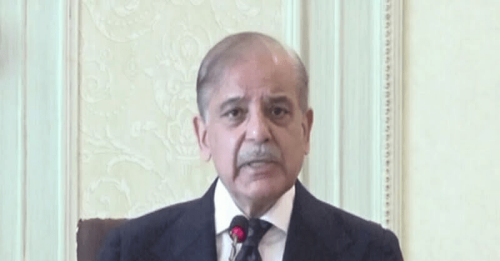Writing in these columns last month, advocate Salman Raja referred to the serious consequences if the Supreme Court invoked belief-related provisions of the constitution as its basic features. The questions raised by him merits serious response from the country's legal experts and if their silence is due to fear of any group, Pakistan is facing a much greater danger than is generally realised.
Unfortunately, Dicey's dictum of parliament's absolute supremacy that had been developed for the British parliament, the most unique legislature in the world, has been superseded in many countries. Even in the case of Britain the rulings of the European court can override decisions of its parliament.
The authorship of the doctrine of basic features has been attributed to a German professor, Dr Conrad, who argued “Any amending body organised within the statutory scheme, however verbally unlimited its power, cannot by its very structure change the fundamental pillars supporting the constitutional authority.”
According to A.G. Noorani many Indian jurists accepted Prof Conrad's thesis which was also discussed in the famous Kesavananda Bharti case. Although Justice Khanna, whose judgment is said to have helped six other judges of the 13-member bench to prevail upon the six judges who had held parliament to be supreme, did not accept the theory of implied limitation, he seemed to have found a middle way when he said “The power of amendment under Article 368 does not include the power to abrogate the constitution, nor does it include the power to alter the basic structure or framework of the constitution. Subject to retention of the basic structure, the power of amendment is plenary and includes within itself the power to amend the various articles of the constitution, including those relating to fundamental rights as well as those which may be said to relate to essential features.”
Reliance on Indian case law is quite problematic because it developed in the peculiar context of the Indira Gandhi emergency, the government's decision to bar courts from reviewing several hundred enactments, the tussle between the government and the judiciary over appointments and attempts to get the Kesavanandi verdict reversed, and finally the decision on both sides to exercise restraint.
Besides, till the Kesavananda case, the judges themselves were divided. In the three cases decided (including Kasavananda) 19 judges had ruled in favour of parliament's unlimited power of amendment while the number of judges ruling in favour of limitations was 15. It is safe to argue that while the basic features doctrine holds the field, its use has become infrequent.
The basic features theory has also been invoked in Bangladesh and Pakistan. In 1963 in the Fazlul Quader case the Supreme Court of Pakistan had used the expressions “fundamental” or “essential features of the constitution”. In another judgment it tried to establish a grundnorm. In Achakzai's case (1997) it mentioned democracy, federalism, freedom of the judiciary and Islam as salient features of the constitution. Again in 2000 the court referred to the basic features of the constitution while validating Musharraf's act of treason.
Unfortunately, the matter has not been debated in Pakistan outside the courts, except for a few instances such as Makhdoom Ali Khan's introduction to the 1973 constitution or Hamid Khan's disapproval of the renaming of parliament as majlis-i-shura by Ziaul Haq. As a result several crucial issues have not been thrashed out. For instance, who decides about the basic features of the constitution? Usually the basic features of a constitution are identified by the legislature and it is largely in the subcontinent that the judiciary has assumed such authority.
The trouble with this course is, firstly, that the judiciary exceeds its mandate of interpreting the constitution and encroaches on parliament's right to frame and amend the constitution, and secondly, it runs the risk of identifying the basic features of the constitution arbitrarily and subjectively. One does not know how to place the Supreme Court's 2000 reference to the basic features of the constitution in a situation when the whole constitutional order had been subverted! The judgments of the court delivered when it was not independent cannot be easily endorsed.
The most essential feature of any constitution is that it must be true to the social contract on which a state is founded. Surprisingly enough, little has been heard of the social contract under which Pakistan came into being — the Lahore Resolution of 1940 and its elaboration by the Muslim League at its various sessions and in the Quaid-i-Azam's numerous speeches. If anyone must look for basic features of the constitution it is to these records that he should turn.
The difficulty in seeking the basic features of the constitution in the so-called religious provisions is three-fold; first, these provisions do not figure in the social contract the people accepted while establishing Pakistan; secondly, it has never been proved that these provisions are in accord with Islamic injunctions; and thirdly, which of the various interpretations of Islam will be upheld in the constitution. Another critical issue is what will happen in the event of a conflict between any two basic features (between belief and democracy or between belief and the judiciary)?
While practically all belief-related provisions fail the three tests above, the status of the Objectives Resolution is the weakest of all. Moreover, it was never a substantive part of the basic law until Zia whimsically ordered so.
The first report of the Basic Principles Committee (BPC), presented in 1950 by Liaquat Ali Khan, the mover of the Objectives Resolution, said “The Objectives Resolution should be incorporated into the constitution as a directive principle of policy, subject to the provision that this will not prejudice the incorporation of fundamental rights in the constitution at the proper place.” Did this mean that the fundamental rights were not to be affected by the resolution, or were they a basic feature of the constitution?
The second BPC report (1953) was full of religious rhetoric but it put the Objectives Resolution in the preamble. The third BPC report (1954) that was eventually adopted by the second constituent assembly, also kept the Objectives Resolution in the preamble. The position was not changed in the 1956, 1962 and 1973 constitutions.
How does a provision arbitrarily made by a usurper of power supersede the Lahore Resolution and the constitutions drafted by competent authorities?
The social contract on which Pakistan is premised only says that the state shall be a democratic federation of autonomous units, that it shall be managed by the people's elected representatives and that the minorities' rights shall be protected. These are the only immutable features of the Pakistan constitution. All other arguments are products of political opportunism.













































Dear visitor, the comments section is undergoing an overhaul and will return soon.